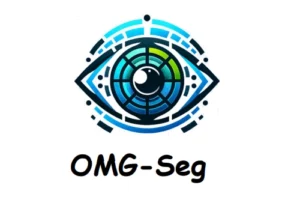Prepare to see a game-changing development in the area of text-to-video generation! Join us on a creative journey as they uncover a spectacular union of pixels and latent power. Learn how these two worlds combined to produce something outstanding building an emotional connection as well as a link to technology. David Junhao Zhang, Jay Zhangjie Wu, Jia-Wei Liu, and some other researchers from Show Lab and the National University of Singapore are involved in this research study.
AI researchers have advanced quite a way in the field of massive amounts of pre-trained text-to-video Diffusion Models (VDMs). However, prior techniques had drawbacks. Some used only pixel-based VDMs, which were computationally costly, while others used latent-based VDMs, which had difficulty specifically matching text and video.
In this study, they present Show-1, an innovative hybrid model. For text-to-video creation, this model combines the advantages of both pixel-based and latent-based VDMs. Their method starts with the use of pixel-based VDMs to generate a low-resolution video with a good link between the text and video content. Following that, they created a special professional translation method that uses latent-based VDMs to improve the low-quality video and bring it up to high resolution.
In comparison to latent VDMs, Show-1 may generate high-quality films with precise placement of text and video material. Show-1 is greatly better than pixel VDMs, utilizing only 15GB of GPU RAM during deduction as opposed to 72 GB. They also tested and validated their model’s performance against common video creation standards.
Prior Works of Show-1 and their limitations
Text-to-image conversion has improved greatly. In 2016, they updated Goodfellow’s unbiased Generative Adversarial Network (GAN) for text-to-image production. GANs developed over time, introducing a progressive generation. In 2021, the goal was to improve text-image alignment. Diffusion models have been playing an important role in the advancement of text-driven realistic and compositional picture creation.
Two basic ways of producing high-resolution photographs have evolved. The first involves cascaded super-resolution methods operating within the RGB domain. The other technique, on the other hand, uses decoders to discover latent spaces. With the availability of robust text-to-image diffusion models, they provide a solid platform for initializing text-to-video models.

Prior research on text-to-video production has used a variety of generative models, such as GANs, Autoregressive models, and implicit neural representations. Recent works have gone into utilizing diffusion models for both conditional and unconditional video manufacturing, encouraged by the success of diffusion models in image synthesis. For the purpose of high-quality video creation, they investigated hierarchical architectures, keyframes, interpolation, and super-resolution modules.
Some models, such as Magicvideo and Video LDM, use latent-based VDMs, but others, such as PYoCo, Make-A-Video, and Imagen Video, use pixel-based VDMs. Their solution, on the other hand, offers an innovative and effortless integration strategy, merging both pixel-based and latent-based VDMs for a new era in text-to-video creation.
Introduction about Show-1
They have seen the introduction of large-scale pre-trained text-to-video Diffusion Models (VDMs), both closed-source and open-source, such as Make-A-Video, Imagen Video, Video LDM, and Gen-2. These VDMs are classified into two types: pixel-based VDMs that work directly with pixel values e.g., Make-A-Video, Imagen Video, PYoCo and latent-based VDMs that function inside a compacted latent space e.g., Video LDM and MagicVideo.
Pixel-based VDMs are great at generating motion that is in sync with verbal prompts, but they require a lot of processing power, especially for high-resolution films. Latent-based VDMs, on the other hand, are efficient with resources but can have difficulty capturing rich visual elements given in the text, resulting in a mismatch.

They introduce Show-1 to bridge between and connect the strengths of both pixel-based and latent-based VDMs. This effective text-to-video paradigm generates videos with good text-video alignment and high visual quality while reducing computing expenses to a minimum. Their method employs a traditional coarse-to-fine video creation pipeline, beginning with low-resolution, low-frame rate keyframes and ending with temporal interpolation and super-resolution modules to improve temporal and spatial quality.
They use latent-based VDMs to convert low-resolution films to high-resolution videos while keeping the original look and alignment. To generate high-resolution movies at a low computational cost, they present an original two-stage super-resolution module that integrates both pixel-based and latent-based VDMs.

To summarise, their study makes important contributions:
- They show that pixel VDMs are great for low-resolution films with natural motion and text-video synchronization, whereas latent VDMs can be effective high-resolution tools when used as a first guide with low-resolution videos.
- They present Show-1, a unique video production model that combines the benefits of pixel and latent VDMs to produce high-resolution films with exact text-video alignment at a cheap computational cost of 15 GB GPU memory during reasoning.
- On standard benchmarks such as UCF-101 and MSR-VTT, their technique provides cutting-edge performance.
Future scope of Show-1
The future scope of text-to-video generation includes many fields these models can be used in content generation offering effective and accessible meaning of video content this model can also be used in marketing, entertainment, education, and many other fields from this model allowing video production. This technology can also improve video summarization and can also be used in simplifying lengthy videos technology has the way for multiple a system this technology can advance accessibility by converting text content into video format for visual inspired in this research model retirement ethical considerations and real time application stand out.
Data and Code availability
The research data of this model is available on Arxiv. The implementation code is also freely available to the public on GitHub. All the data is open source and easily available for use.
Potential fields of Show-1
The potential applications of text-to-video generation include many fields for example first it includes marketing and advertisement this model can help in content generation by the production of tailored video advertisements based on briefing in the education sector text to video generation can help in creating, engaging and personalized educational content teachers and students both can transform their lesson plans or their work into video format.
This model can also help new organisations generate their video summary articles for breaking news and news stories making information more accessible and easy for the audience to understand. This model can also be used in entertainment and content production text to video model can help in animated videos, short films, and will be reality experiences video models can help in creating training videos and educational material and can help designers designs and ideas to show to the clients and stakeholders
Working of Show-1
DDPMs (Denoising Diffusion Probabilistic Models) are generative models. In this model they produce a constant of data points S such as a photograph they also use a mathematical formula that follows a Gaussian distribution which is used to move one point to the next point to compute. All these different data point models implement some principles such as Bayes’ theorem and Markov chains.
The UNet model was originally developed for medical picture analysis but now it is commonly used for generating images from text descriptions it is divided into many sections including down middle and up blocks and it has many players these models can convert text descriptions into video forms by focusing on a specific area of the text.

Researchers added some more layers for the sake of analysis of timing and the sequence of photos to make these images look like they are related to the video please extra layers please an important role in smoother and more natural-looking video.
Researchers also build frameworks which are important frames in the video before they start filming. They do this at a low resolution because they want to capture the main idea that is given in the text other than tiny details they make sure that the keyframes attention. To make the video look more smoother they deploy a unique approach that takes keyframes and text into consideration.

Researchers improve the resolution of videos to make them better and clearer. This task is achieved by including more information in the video in order to improve the video’s appearance. They used an approach that included several extra channels and noises.
In order to improve the quality of the video researchers boosted the video by adding more details to it researchers used a new technique to improve the video quality and added more details and that was not difficult to add details to the video at that point this technique improved overall visual of the video.
Experimental results of Show-1
Here is an explanation of how all experimentations are done and what are there results.
Implementation Specifics
To begin keyframe production, they used DeepFloyd’s pre-trained Text-to-Image model, which resulted in 8×64×40×3 videos. They used keyframes to initialize the interpolation model, resulting in 29×64×40×3 videos. For Beginning Super-Resolution they used DeepFloyd’s SR model, and they initialized the spatial weights, resulting in 29 × 256 × 160 videos. They changed the ModelScope text-to-video model and used expert translation to create videos with a resolution of 29 × 576 × 320. The WebVid-10M dataset was used for training.
Quantitative Findings
Show-1 outperformed various other models in both the Insight Score (IS) and the Fréchet Video Distance (FVD) measures. Show-1 performed best in FID-vid and FVD, displaying exceptional visual congruence and semantic coherence.
Qualitative Findings
Show-1 exceeds open-source models like ModelScope and ZeroScope in terms of text-video alignment and visual dedication and even matches or exceeds closed-source cutting-edge techniques like Imagen Video and Make-A-Video.
Ablation Research
Using pixel-based VDMs for low-resolution stages and latent diffusion for high-resolution stages resulted in the best CLIP score while having the lowest computing costs. Expert translation in latent-based VDMs greatly enhanced visual quality, minimizing artifacts and capturing finer details.

Conclusion
They present Show-1, a novel model that combines the advantages of pixel and latent VDMS. Their method starts with pixel-based VDMs for initial video creation, assuring exact text-video alignment and motion representation, and then switches to latent-based VDMs for super-resolution, efficiently shifting from a lower to a higher resolution. This combination technique produces high-quality text-to-video output while reducing computational expenses.
Reference
https://arxiv.org/pdf/2309.15818v2.pdf
https://github.com/showlab/Show-1
Similar Posts
-
Chinese Company DeepSeek Releases DeepSeek-Coder a LLM for Code Generation

-
Alibaba’s Mobile-Agent: A Smart Mobile Assistant
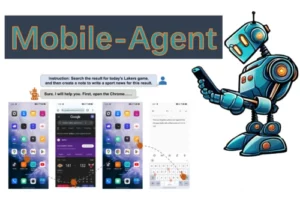
-
Grounded SAM: A Unified Model for Diverse Visual Tasks
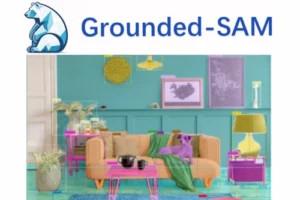
-
Gaussian Head Avatar: High Quality Head Avatar Generator
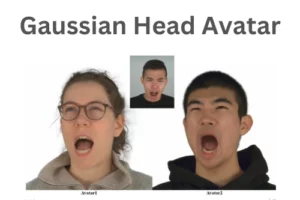
-
Google DeepMind’s AlphaGeometry: Without Assistance Solving Olympiad Geometry Problems
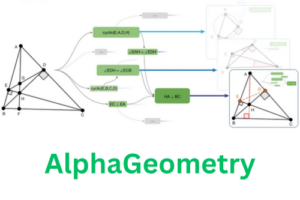
-
OMG-Seg: A Unified Segmentation Model
